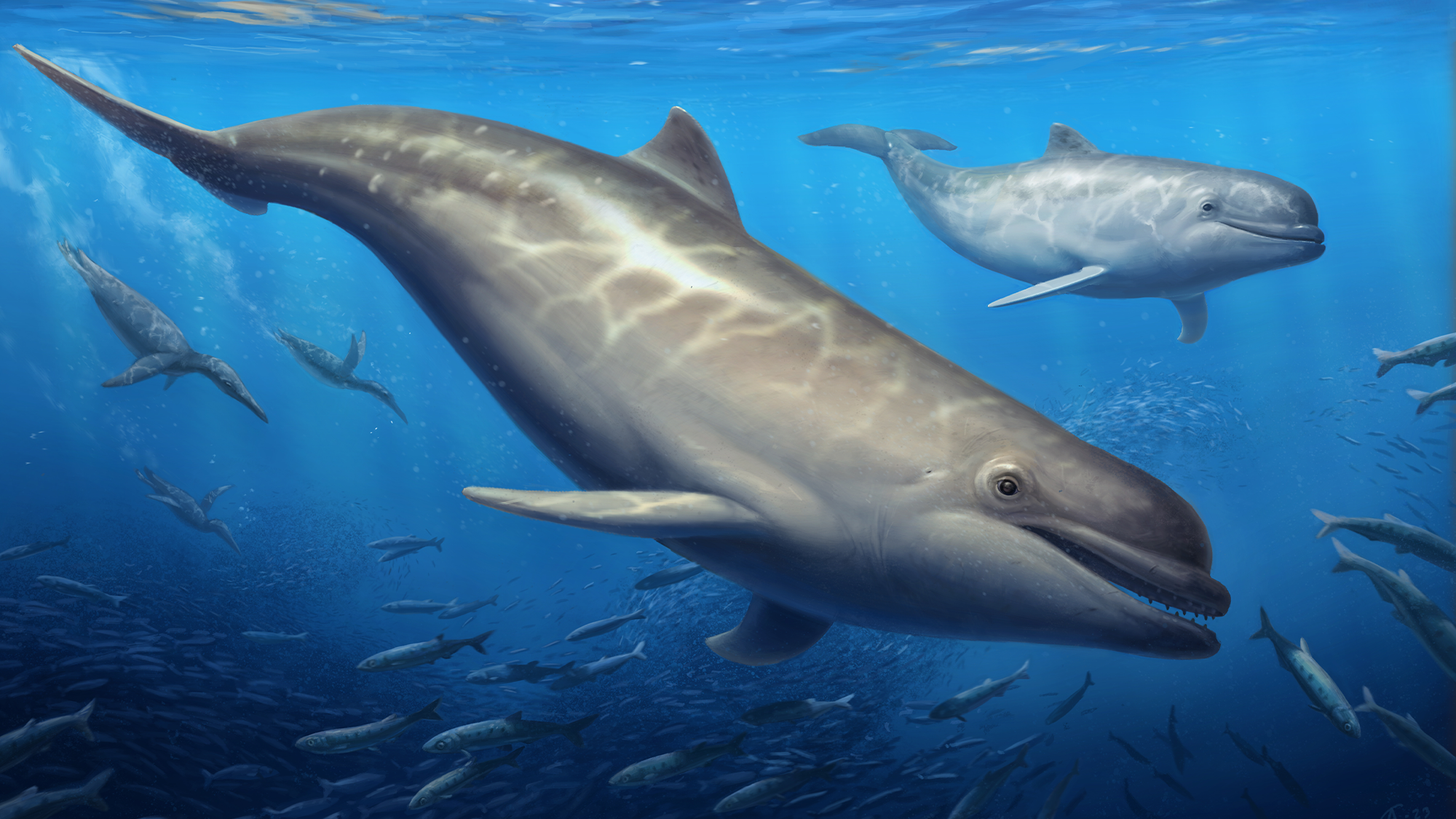

A new species of early odontocete—or toothed whale—is giving us a closer look into what some of the earliest ancestors of present-day dolphins may have looked like. In a study published June 23 in the journal PeerJ Life and Environment, paleontologists describe a new species called Olympicetus thalassodon that is helping scientists understand the early history and eventual diversification of odontocetes.
[Related: Toothed whales turned their vocal fry into a hunting superpower.]
Toothed whales include porpoises, dolphins, sperm whales, orca whales, and, as their name would suggest, they all have some kind of teeth within their jaws. Unlike baleen whales (humpbacks, North Atlantic right whales, etc.) that use their baleen, a filtering system in their mouths primarily made out of bristly keratin plates, to filter feed large amounts of food, odontocetes typically only feed on one fish, squid, or other invertebrates at a time. They are also highly social and most, if not all, toothed whales use echolocation to find their way around the ocean and locate their next meal.
Odontocetes first evolved during the Oligocene Epoch (about 33.7 million to 23.8 million years ago) and the fossils of Olympicetus thalassodon were found in a geologic formation in the Northwest US that dates back to between 26.5–30.5 million years.
“Olympicetus thalassodon and its close relatives show a combination of features that truly sets them apart from any other group of toothed whales. Some of these characteristics, like the multi-cusped teeth, symmetric skulls, and forward position of the nostrils makes them look more like an intermediate between archaic whales and the dolphins we are more familiar with,” study co-author and paleontologist from the Natural History Museum of Los Angeles County Jorge Velez-Juarbe said in a statement.

Olympicetus thalassodon was not alone in the water, and paleontologists found the remains of two other closely related odontocetes nearby and the specimens described in the same study. The specimens were unearthed in the Pysht Formation, an exposed layer of rock along the coast of Washington State’s rugged Olympic Peninsula.
The study found that Olympicetus and its close kin belonged to a family called Simocetidae. This group is only known to have swam in the waters of the North Pacific, and is one of the earliest diverging groups of toothed whales on the whale family tree. Simocetids were part of an unusual group of animals represented by fossils found in the Pysht Formation. Some of these strange Pysht fauna include an extinct group of penguin-like flightless birds called plotopterids, early seal and walrus relatives called desmostylians, and even extinct toothed baleen whales.
[Related: Millions of years ago, marine reptiles may have used Nevada as a birthing ground.]
Based on differences in body size, teeth, and other body structures related to feeding, simocetids may have acquired prey differently and had varying prey preferences.
“The teeth of Olympicetus are truly weird, they are what we refer to as heterodont, meaning that they show differences along the toothrow,” said Velez-Juarbe. “This stands out against the teeth of more advanced odontocetes whose teeth are simpler and tend to look nearly the same.”
However, some additional aspects of their biology has yet to be uncovered, including whether or not they could echolocate like their living relatives. Their skulls do indicate the potential presence of a melon, which is an important echolocation-related structure. Additionally, a 2019 study suggested that neonatal whales found in the Pysht Formation couldn’t hear ultrasonic sounds, and future study into the ear bones of subadult and adult individuals could test if this ability changed as they aged.